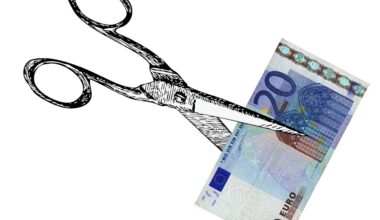Innovative Reward Systems for B2C Customer Loyalty
Customer retention is crucial in B2C marketing and hinges greatly on effective reward systems. Companies must recognize the importance of fostering loyalty through innovative approaches. One strategy is to implement referral rewards, which motivate existing customers to recommend services to their peers. Additionally, personalized rewards cater to individual preferences, making customers feel valued and understood. Another effective tactic is to integrate social media incentives, where customers gain points or discounts for engaging with the brand online. This enhances brand visibility while simultaneously promoting customer loyalty. Furthermore, tiered loyalty programs create a sense of achievement, encouraging continuous patronage. Customers often remain loyal when they perceive clear value in their purchases and rewards. Streamlining the redemption process of rewards is essential; if customers encounter hurdles, they may lose interest. Ultimately, the goal is to create a seamless, rewarding experience that forms a lasting connection between the brand and its customers. Regularly reviewing and adapting these reward strategies based on customer feedback can ensure that businesses stay relevant and competitive in an ever-changing market environment.
Engagement is another vital aspect of retaining customers in the B2C sector. Frequent communication through personalized emails or app notifications reinforces brand presence and encourages customers to participate in the reward program actively. Providing exclusive early access to new products or sales can cultivate a sense of belonging among loyal customers. Additionally, surprise and delight tactics, such as unexpected gifts or discounts, can greatly enhance customer satisfaction and strengthen their emotional connection to the brand. These little gestures can markedly differentiate a brand from its competitors. Utilizing gamification in loyalty programs also effectively increases interaction and retention. Customers earn points or unlock levels through purchases, creating an engaging experience. Informing customers about their progress can instill a desire to achieve the next tier. Regularly assessing customer preferences through surveys and feedback helps businesses refine their loyalty strategies. As a result, understanding what customers truly want will keep them invested in the brand. Consideration of seasonal promotions or special events tied to the loyalty program can also spur customer engagement.
The Role of Data Analytics
Data analytics plays a critical role in the effectiveness of customer retention strategies. By analyzing purchasing behavior and preferences, brands can tailor rewards to what customers value most. This data-driven approach fosters personalization, enhancing loyalty. Additionally, understanding seasonal trends can inform timely promotions or events, effectively engaging customers when they are most likely to make purchases. Predictive analytics can also help brands anticipate customer needs, allowing them to approach customers proactively with personalized offers. This level of preparation demonstrates a deep understanding of customer behavior, letting them feel prioritized. Brands can further utilize segmentation strategies based on customer behaviours, crafting specific campaigns targeting different demographics. Implementing A/B testing for promotional offers can provide insights into what resonates with customers, ensuring effective communication. Brands should consistently monitor metrics that gauge customer engagement and satisfaction to assess the performance of reward initiatives. Continuous refinement based on received feedback can enhance the overall customer experience, improving retention rates while also fostering brand loyalty.
Integrating technology into customer loyalty programs has become an essential focus for B2C marketing. Mobile applications can streamline reward redemption, ensuring that customers experience minimal hassle when engaging with loyalty programs. Offering digital wallets within these apps can allow personalized discounts and rewards to be easily accessible. Alongside creating a more efficient experience, the integration of chatbots can enhance customer interaction, providing instant responses to queries related to loyalty programs. This not only saves time but also creates a sense of connection between the brand and its customers. Moreover, technology allows for real-time updates on status and rewards earned, keeping customers informed and engaged. Using social media integration can also boost visibility for loyalty programs, driving sign-ups through engaging posts or user-generated content. Collaborating with other brands for combined loyalty programs can create additional value, offering customers enhanced rewards and experiences. Such partnerships can also expand customer bases, benefiting all parties involved. Making the most of technology enhances the effectiveness of retention strategies, ensuring brands remain competitive in a saturated marketplace.
Emphasizing Customer Feedback
Emphasizing customer feedback is key in developing successful reward systems. Regularly soliciting input through surveys or social media polls enables businesses to dissect customer sentiments regarding their loyalty programs. Understanding what resonates with customers can lead to improved satisfaction and loyalty. Customers appreciate when brands genuinely listen to their preferences and concerns, making adjustments based on feedback. Analyzing feedback can spotlight the most and least popular features of a rewards program. Implementing changes based on this feedback helps solidify customer trust and demonstrates responsiveness. Moreover, recognizing loyal customers publicly, through testimonials or featuring them on social media, can strengthen their bond with the brand. Acknowledging customer contributions fosters community and creates a more personal connection. Furthermore, it reinforces the idea that rewards programs are for customers and evolve along with them. Transparency about how feedback will influence loyalty programs can also enhance customer trust. This creates a culture where the brand and customers grow together, ultimately leading to stronger loyalty and retention rates in an ever-evolving landscape.
Incentivizing repeat purchases through innovative reward systems is vital in retaining B2C customers. Businesses should consider implementing point systems where customers earn points for each purchase, allowing them to redeem these points for future discounts or exclusive products. Seasonal promotions can add excitement, giving customers the opportunity to earn bonus points during specific periods. Additionally, offering double point days can spur purchases, particularly in slower times. Collaborative promotions with other brands providing complementary products can elevate the value of a rewards program. Such partnerships offer customers more options, encouraging them to spend more while building loyalty to multiple brands. Furthermore, birthday bonuses or anniversary rewards can contribute to a personalized experience, making customers feel appreciated and valued. Special events providing additional earning opportunities can also make loyalty programs engaging. Brands should regularly evaluate and adjust their strategies to keep rewards fresh and appealing, ensuring ongoing customer engagement and satisfaction. With these continuously evolving offerings, brands can create a lasting loyal customer base, enhancing overall business performance through effective customer retention strategies.
Conclusion
In conclusion, developing innovative reward systems is crucial for enhancing customer loyalty in B2C marketing. By leveraging effective engagement strategies and relying on data analytics, businesses can create personalized experiences that foster lasting relationships with customers. Integrating technology within loyalty programs enhances efficiency while emphasizing customer feedback strengthens trust and satisfaction. Through these strategic approaches, businesses can create rewarding ecosystems that not only encourage repeat purchases but also cultivate a sense of community among their customers. Regularly refining and adapting reward strategies ensures that brands remain relevant in the competitive marketplace. Maintaining a focus on personalization, convenience, and customer feedback will yield significant benefits in retention rates, ensuring sustainable growth for businesses. Continuously innovating and adapting will prepare brands to meet evolving customer needs effectively. Ultimately, a successful customer loyalty program should nurture relationships and reward customers with what they truly value, aligning perfectly with their objectives and aspirations. By implementing these innovative reward systems, companies can thrive while fostering a loyal and engaged customer base that drives long-term success.
The journey of establishing robust customer retention strategies is a continuous process that evolves with customer expectations and market dynamics. As a result, staying informed about the latest trends and developments in the B2C sector is essential. Adopting a proactive approach and regularly reassessing reward systems ensures brands remain competitive. The integration of innovative ideas, customer feedback, and technological advancements in reward strategies can significantly enhance customer loyalty. Evaluating the impact on customer retention will be necessary to measure success. Retaining customers is far more cost-effective than acquiring new ones. Implementing effective reward models that resonate with customers will not only foster loyalty but also establish a brand identity that customers can trust. Loyalty programs should therefore prioritize creating positive and memorable experiences. By adopting these innovative approaches, businesses can ultimately reap the benefits of increased customer retention, revenue growth, and a stronger competitive edge. Thus, brands should continually strive for excellence in their marketing efforts, creating lasting bonds that translate into shared success for both the customers and the business itself.


